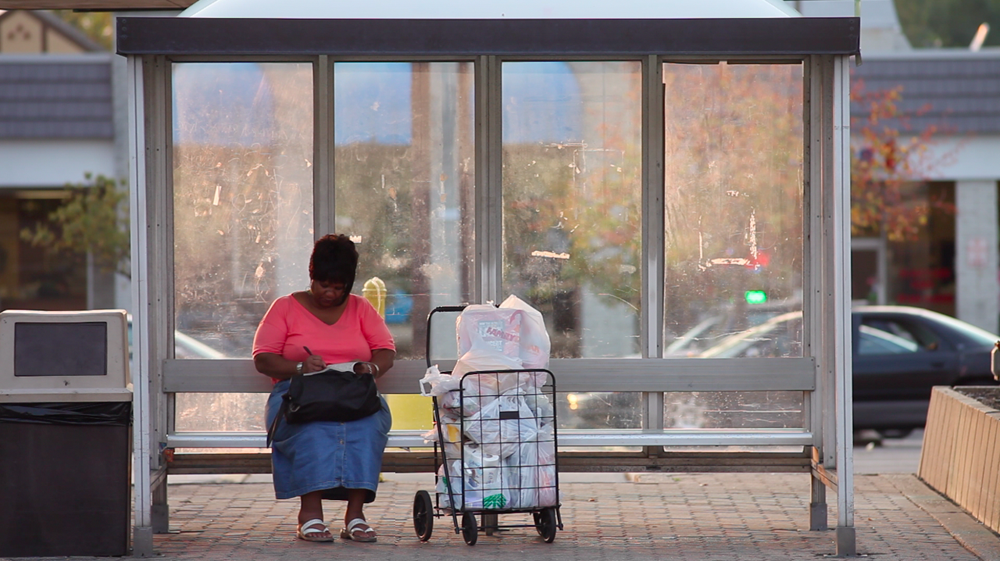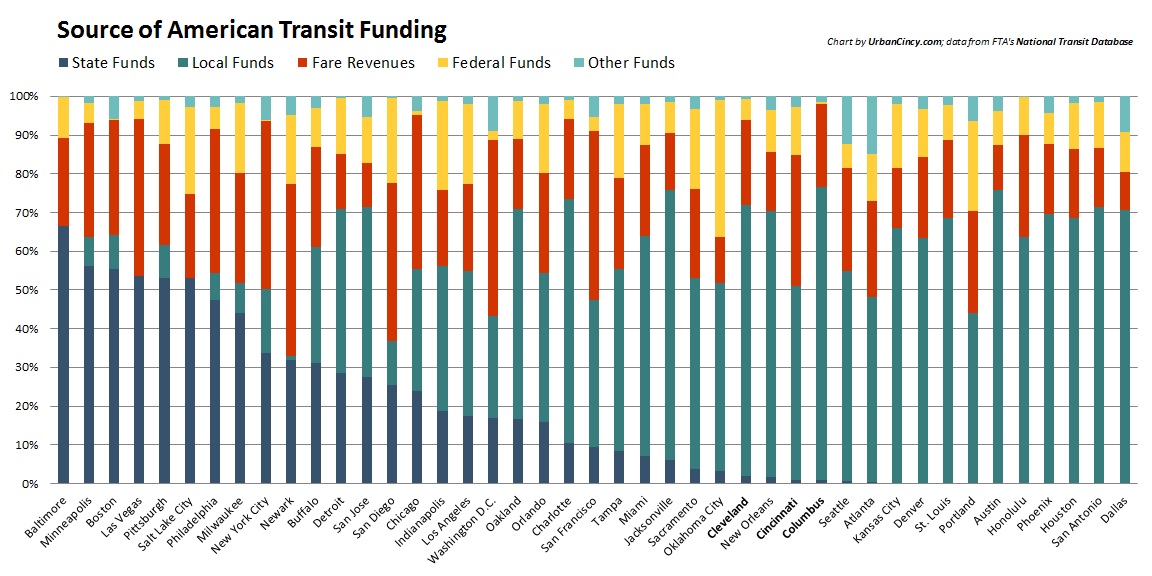According to data from the Federal Transit Authority (FTA), the State of Ohio provides some of the least amount of funding for its regional transit authorities of any state in America.
Texas, Georgia and Missouri also provide next to nothing to their various regional transit agencies, but in no other state are transit agencies as reliant on fares and local taxes as they are in the Buckeye State.
When broadening the search to examine transit agencies in the biggest cities across America, it also becomes clear that states like Pennsylvania, Utah and Maryland, Minnesota and Massachusetts invest large amounts of state dollars in transit. Some transit agencies with little state support, however, receive larger sums of money from regional transit taxes and federal aid.
Ohio’s three largest metropolitan regions – all with more than two million people – are different in this regard and have the least diverse range of financial support of transit agencies nationwide. For both Columbus and Cleveland, it means that well over 90% of their total revenues come from fares and local tax dollars, while in Cincinnati it is slightly better at 84% thanks to a bit more federal aid.
“In the recession we saw transit service cut while gas prices drove transit demand to record levels,” stated Akshai Singh, an Ohio Sierra Club representative with the advocacy organization Ohio for Transportation Choice. “Roughly all of the state’s public transportation funding now goes to operating rural transit services.”
Honolulu is the only other region in the United States that has 90% or more of its funds coming from just fares and local tax dollars. Cities in other states providing next to nothing also approach this threshold, but do not exceed it as is the case in Ohio.
It recently reported that the Southwest Ohio Regional Transit Authority (SORTA) is one of the best stewards of limited financial resources, when compared to 11 peer agencies across the country. One of the key findings from Agenda 360 report was how little state financial support SORTA receives.
Part of the problem in Ohio is due to state cuts that have reduced funding for public transportation by 83% since 2000. Those cuts have forced transit agencies in the nation’s seventh most populous state to reduce service and increase fares over the past decade.
According to All Aboard Ohio, the state only provides approximately 1% of its transportation budget to transit, while more than 9% of the state’s population lives without a car.
In addition to regional transit, Ohio continues to be one of the most hostile states in terms of inter-city passenger rail. The state remains almost untouched by Amtrak’s national network and boasts the nation’s most densely populated corridor – Cincinnati to Cleveland – without any inter-city passenger rail service.
“When Governor Kasich came to office, the first thing he did was send back $400 million in federal dollars, for the 3C Corridor, on the basis that operations and maintenance would have been too onerous on the state,” Singh concluded. “Today, ODOT is allocating $240 million to build a $331 million, 3.5-mile highway extension through a 40% carless neighborhood on Cleveland’s east side, a staggering $100 million per mile new capacity road, while openly acknowledging they are reducing access for local residents.”

